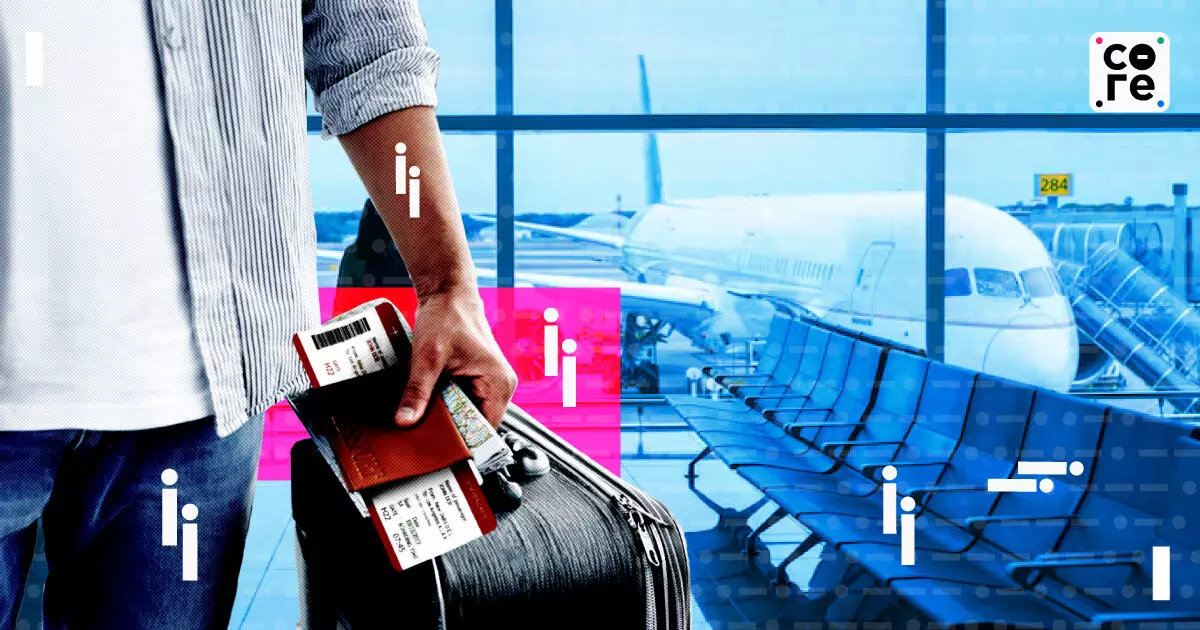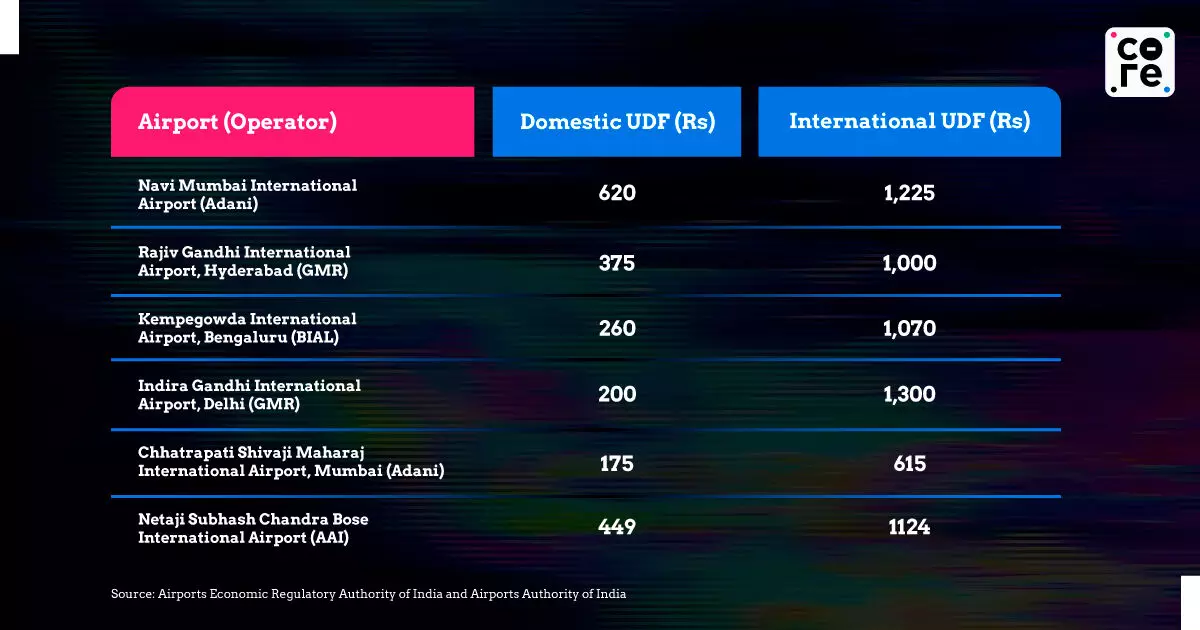
Navi Mumbai’s Airport Fee Puts Spotlight On Rising Passenger Cost Burden
Experts raised concerns over pricing fairness and accessibility, especially for cost-sensitive flyers.

Passengers flying out of the yet-to-be-functional Navi Mumbai International Airport (NMIA) will have to pay among the highest User Development Fees (UDF) in India, sparking sharp criticism from industry experts over affordability, transparency, and lack of competition in Mumbai's airport ecosystem.
“They’re defeating the Prime Minister’s vision of Ude Desh ka Aam Nagrik (UDAN Scheme),” CK Govil, president of the Air Cargo Agents Association of India (ACAAI), told The Core.
Set to open later this year, NMIA will charge outbound domestic passengers Rs 620 and international flyers Rs 1,225 as UDF. Even arriving passengers won’t be spared — Rs 270 and Rs 525 will be levied on domestic and overseas arrivals, respectively.
The charges, approved by the Airports Economic Regulatory Authority (AERA), are applicable as an interim measure till March 31, 2026, or until a final tariff determination is made.
While Delhi has the highest international UDF at Rs 1,300, NMIA’s domestic charge tops the list. Here’s how the major airports compare:
Passengers flying out of the yet-to-be-functional Navi Mumbai International Airport (NMIA) will have to pay among the highest User Development Fees (UDF) in India, sparking sharp criticism from industry experts over affordability, transparency, and lack of competition in Mumbai's airport ecosystem.
“They’re defeating the Prime Minister’s vision of Ude Desh ka Aam Nagrik (UDAN Scheme),” CK Govil, president of the Air Cargo Agents Association of India (ACAAI), told The Core.
Set to open later this year, NMIA will charge outbound domestic passengers Rs 620 and international flyers Rs 1,225 as UDF. Even arriving passengers won’t be spared — Rs 270 and Rs 525 will be levied on domestic and overseas arrivals, respectively.
The charges, approved by the Airports Economic Regulatory Authority (AERA), are applicable as an interim measure till March 31, 2026, or until a final tariff determination is made.
While Delhi has the highest international UDF at Rs 1,300, NMIA’s domestic charge tops the list. Here’s how the major airports compare:

Why Is This Sparking Criticism?
The announcement has triggered concerns over pricing fairness and accessibility, especially for cost-sensitive flyers.
“This kind of pricing excludes the common man. Airlines have deep pockets and influence, so they can get through with what they want. The public ends up bearing the cost,” Govil said.
Adding fuel to the controversy is the fact that both Mumbai’s current airport — Chhatrapati Shivaji Maharaj International Airport (CSMIA) — and the upcoming Navi Mumbai airport are owned by the Adani Group.
“The monopoly is very clear,” Govil said. “By 2030, when the lease on Mumbai airport ends, Adani could hike costs — landing fees and other charges — to make Navi Mumbai cheaper by comparison. Passengers will have no choice but to shift to the Navi Mumbai airport.”
The lack of competitive pricing between two airports in the same metro region has been flagged as a structural concern.
“There has to be some director from the government to ask the airports, look at what extra are they doing with that fee. What exactly are passengers paying for? Can the operator break it down and justify the fee?” Dr Vandana Singh, chairperson the the Aviation Cargo Federation of Aviation Industry in India (FAII), told The Core.
How Is the Fee Set?
The Airports Economic Regulatory Authority (AERA) clarified that the proposal for UDF originates from the airport operator.
“It is not by the will of AERA that the UDF is fixed. It is by the will of the airport operator. AERA ensures there’s no gold-plating and that what’s charged is justified,” GS Bawa, aviation expert told The Core.
To support early-stage capital costs, AERA has permitted NMIA to levy an ad-hoc UDF until final tariffs are determined.
With no immediate recourse, passengers are left with little choice. “The citizen has to fly; they’ll have to pay,” Singh said.
But some believe passenger behaviour may eventually drive change. With cities like Mumbai and Delhi developing dual-airport systems — Navi Mumbai and Jewar, respectively — travellers may begin to weigh not just convenience but also cost.
“Soon, people will ask: Should I fly from Delhi or Jewar? Mumbai or Navi Mumbai?” Bawa said. “They’ll start comparing taxi fare, UDF, and time. A Rs 200 difference may decide the airport the passengers will fly from.”
There is a cap on UDF, but it varies by airport and is regulated by the AERA. Airports must submit detailed cost proposals to AERA, which then approves tariffs for a five-year period.
For smaller airports, domestic UDF is typically capped at Rs 745, while major airports like Hyderabad or Jaipur can levy higher fees if AERA clears their expansion plans. For instance, Hyderabad Airport is allowed to charge up to Rs 750 for domestic and Rs 1,500 for international departures by late 2025. All such charges require AERA’s prior approval.
The Bigger Picture
With infrastructure growing faster than regulation, the clash between private airport economics and public affordability is widening. NMIA’s high UDF might be a test case for how India balances world-class infrastructure with inclusive access.
The larger concern is that unless regulatory oversight becomes sharper and competitive checks are introduced, UDFs may quietly morph from cost recovery tools into revenue instruments, leaving the aam nagrik footing an ever-rising bill.
Experts raised concerns over pricing fairness and accessibility, especially for cost-sensitive flyers.

